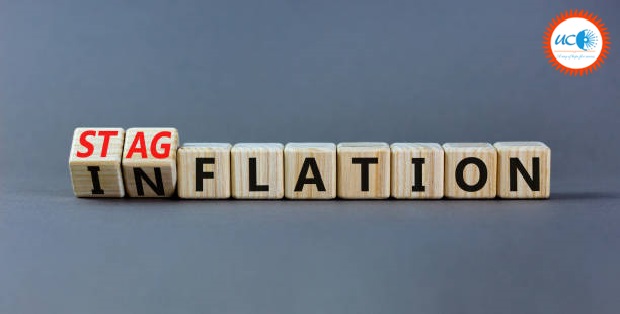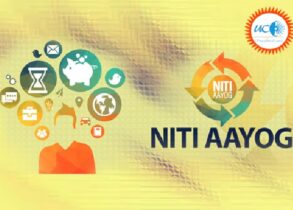What do you understand by stagflation? Do you agree with the view that the Indian economy is experiencing stagflation? Justify your opinion.
Approach:
- Introduce the answer by explaining stagflation.
- Discuss possible justifications for the assertion that India is headed toward stagflation in the body of your response.
- Discuss in detail a variety of opposing arguments why the Indian economy is not experiencing stagflation in the next section of the body.
- In your conclusion, emphasise the need of using a stakeholder approach to create a sustainable economy.
Stagflation is characterised by both persistently high inflation and slow economic development. A stagflation-afflicted economy is typically characterised by slower economic development, increased unemployment rates, and rising prices for goods and services.
According to some experts, the Indian economy is facing stagflation because:
Causes of Stagflation:
- According to MOSPI, retail inflation in April 2022 increased by 7.8%, which was the highest rate in the previous eight years, but economic development in India has been slowing for the past six quarters.
- As a result of global headwinds caused by an increase in commodity prices, particularly crude oil prices as a result of the Ukraine conflict, the Indian economy faces a risk of stagflation due to imported inflation. For instance, Morgan Stanley reduced its estimate of India’s GDP for 2023 by 50 basis points.
- Stagflation trends were underlined by CMIE Data, which showed that the unemployment rate increased from 7.60% in March to 7.83% in April, causing a drop in consumption.
- Due to strict lockdowns brought on by pandemics, global supply chain disruptions in a number of industries, including the production of mobile phones, footwear, and automobiles, have caused price increases.
- Although the economy as a whole is expanding, some experts claim that the growth is concentrated at the upper end. For instance, the growth of MSMEs, farmers, and employees is weak.
The Indian economy cannot be claimed to be experiencing stagflation despite a slowdown in economic growth and severe inflationary pressure because:
- India will be one of the fastest growing big economies in the world in 2022–2023, according to the RBI, with an estimated economic growth rate of 7.8%.
- The global oil and commodity prices are anticipated to return to normal as the geopolitical situation in Ukraine eases, reducing the impact on inflation at home.
- The increase in retail inflation brought on by a surge in agricultural commodity prices is due to climatic whims (unseasonal rainfall, heat waves), not fundamental defects that could lead to stagflation.
- The growth in economic activity is evident from the buoyancy in the GST revenue and a spurt in the energy demand.
- The increase in merchandise exports to 400 billion USD in the current fiscal negates the claim of stagflation in the economy.
- The government should engage all stakeholders to address the supply-side issues. A calming down of food prices, along with infusing money in hands of the poor and the middle classes with simultaneous increase in output, strengthening of infrastructure will help the government to propel sustainable growth, without falling into stagflation trap.






